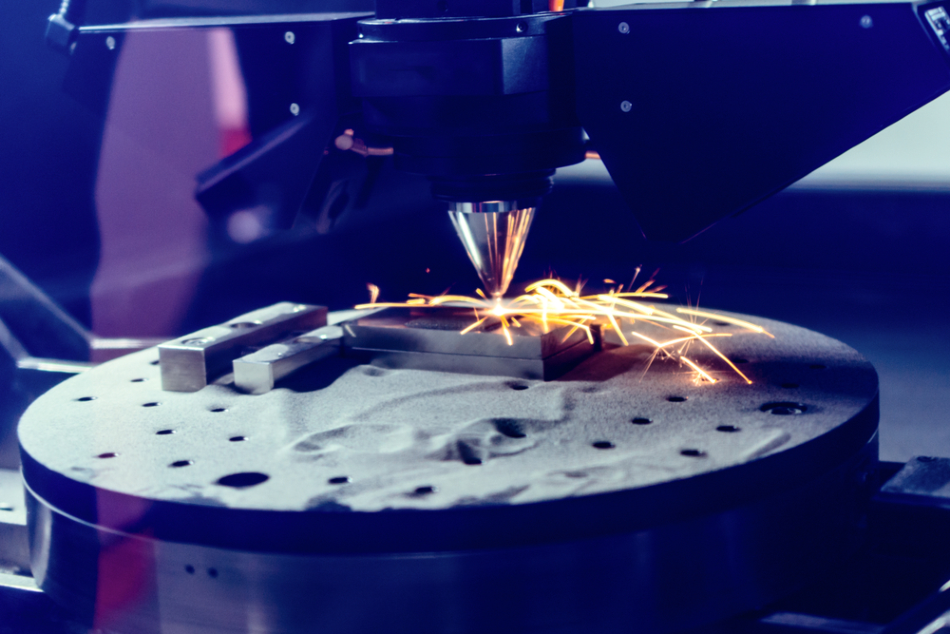
Image Credit: Nordroden/Shutterstock.com
Additive manufacturing – or 3D printing – was first commercialized in the 1990s and has undergone huge growth in the decades that followed, with exponential revenue growth since 2013.
However, the industry has been negatively affected by the COVID-19 pandemic, at least in the short-to-mid-term. In the longer-term, the industry is forecast to recover, exceeding $10 billion by 2030.
What is Additive Manufacturing?
Additive manufacturing creates an object from a computer-aided design (CAD) model by fusing a material - often metal or plastic - layer by layer. The method is precise and repeatable, and can be used for developing prototypes, creating replacement parts, or for small- to large-scale manufacturing.
There are many advantages to the process, such as the freedom to design unusually shaped objects, versatile manufacturing, and a reduction in costs. There is an ever-expanding array of printer processes which employ an even more significant number of material feedstocks.
Aerospace and defense, as well as the medical and dental sectors, are among the high-value industries already successfully utilizing the technology. However, industries such as the automotive and oil and gas are emerging users. Within the next decade, it is expected that these will make up the largest vertical markets in the industry.
The Impact of COVID-19 on the Industry
Before the coronavirus pandemic, the industry was predicted to continue its pattern of exponential growth. Over the years, revenue has increased, new entrants to the market emerged, and investments were hefty. However, it is expected to see a period of significant decline that will take years to recover from.
A report from IDTechEx, Metal Additive Manufacturing 2020-2030, suggests the COVID-19 pandemic caused internal and client operations to grind to a halt for large parts of Q1 and Q2, causing a fall in the market in the immediate timeframe.
There is evidence that pre-arranged investments, certifications and orders have all continued during 2020, but this does not take into account the impact on internal operations and end-users. The most relevant sector likely to be impacted is aerospace, the report suggests.
Read more: 3D Printers and 3D Printing Equipment, Materials and Accessories
The Post-COVID-19 Recovery
Additive manufacturing has gained recognition during the coronavirus pandemic. Manufacturers have begun to focus on weaknesses in their supply chain, and capabilities have been highlighted in compelling circumstances such as the requirement for ventilator parts.
The report suggests that these are small victories, and the impact on the market has been far-reaching and recovery will take time. The short-to-mid-term recovery will vary for each sector, with civil aviation expected to bounce back the slowest.
But there is still much movement within the industry, with the prospect of acquisitions, capacity expansion, improved processes, new materials and reduced costs.
Material demand is predicted to spring back faster, and much of the annual revenue growth will come from here rather than printer sales and installation. This is perhaps not surprising given that every process and application has different materials, throughput rates and alloy demands.
Modifying Additive Manufacturing Materials
There is great untapped potential in materials, and many companies are investigating how to modify those already in use.
Titanium, steels, aluminum, copper and nickel- and cobalt-based metal powders are most commonly used as a feedstock for the process, in addition to precious metals. However, these can be expensive and often modified from other materials.
The industry is investigating new approaches to powder production. 6K, for example, are employing a microwave plasma system with very high yield for Inconel (a family of austenitic nickel-chromium-based superalloys – non-metallic stainless steels - trademarked by Special Metals Corporation) and titanium alloy production.
Tekna and 6K are just two companies researching the viability of recycling scrap metal parts for use as additive manufacturing powders and upcycled titanium parts.
Equispheres is investigating aluminum alloys as a materials feedstock while Elementum 3D is developing a proprietary reactive additive manufacturing (RAM) process to address the issue with grain structure in aluminum and metal matrix composites (MMC).
Conclusion
Although the metal additive manufacturing industry is suffering as a result of the COVID-19 pandemic and will continue to do so for several years, it is not predicted to be a long-term effect. The industry is expected to bounce back and excel again within a decade.
Recovery will likely take longer in terms of printer sales and installation, but materials are expected to recover much quicker, perhaps even faster as a result of current research into improving their application.
By 2030, it is expected that there will be an even greater range of applications than currently available, including some that the industry is rapidly researching, and many that are not even known yet.
References and Further Reading
Collins, R. (2020) The Fall and Rise of Metal Additive Manufacturing. [Online] IDTechEx. Available at: https://www.idtechex.com/en/research-article/the-fall-and-rise-of-metal-additive-manufacturing/21240 (Accessed 5th August 2020).
Collins, R. et al (2020) Metal Additive Manufacturing 2020-2030 [Online] IDTechEx. Available at: https://www.idtechex.com/en/research-report/metal-additive-manufacturing-2020-2030/762 (Accessed 5th August 2020).
Taylor-Smith, K. (2020) How 3D-Printed Metal Parts will Revolutionize Army Logistics Chains. [Online] AZoM. Available at: https://www.azom.com/article.aspx?ArticleID=19232 (Accessed 5th August 2020).
IDTechEx, (2020) 9 Quiet Materials Science Start-Ups Ready to Change Metal Additive Manufacturing. [Online] PR Newswire. Available at: https://www.prnewswire.com/news-releases/9-quiet-materials-science-start-ups-ready-to-change-metal-additive-manufacturing-reveals-idtechex-301105830.html (Accessed 5th August 2020).
Disclaimer: The views expressed here are those of the author expressed in their private capacity and do not necessarily represent the views of AZoM.com Limited T/A AZoNetwork the owner and operator of this website. This disclaimer forms part of the Terms and conditions of use of this website.